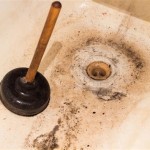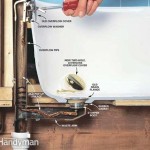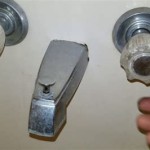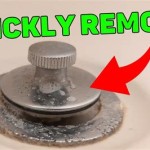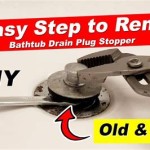Bathtub Faucet Without Diverter Valve: A Comprehensive Guide
A bathtub faucet without a diverter valve is a specific type of plumbing fixture designed solely for filling the tub with water. It operates independently of any shower functionality. Understanding the features, benefits, limitations, installation, maintenance, and potential issues associated with this type of faucet is crucial for homeowners, plumbers, and anyone involved in bathroom design or renovation.
The absence of a diverter valve significantly simplifies the faucet's design and operation. A diverter valve, found in tub and shower combinations, redirects water flow between the tub spout and the showerhead. Eliminating this component results in a faucet exclusively dedicated to delivering water into the bathtub, making the selection, installation, and maintenance processes distinct from those of combination faucets.
Key Point 1: Understanding the Mechanics of Non-Diverter Faucets
The core functionality of a bathtub faucet without a diverter is remarkably straightforward. Hot and cold water lines connect to the faucet body, where they are mixed to achieve the desired water temperature. This mixed water then flows through the spout and into the bathtub. The controls, typically handles or a single lever, regulate the water flow rate and temperature. The simplicity of this design contributes to its reliability and ease of use.
Unlike faucets with diverter valves, there are no moving parts within the faucet body dedicated to redirecting water flow. This reduced complexity translates to fewer potential points of failure. The faucet only needs to perform one function: delivering mixed water to the tub. This dedicated function eliminates the potential for leaks or malfunctions associated with a faulty diverter mechanism.
The interior components of a non-diverter faucet typically consist of cartridges or compression stems that control the water flow. Cartridge-style faucets use a single cartridge to regulate both the hot and cold water supply, while compression-style faucets employ separate stems for each. The choice between these styles often depends on personal preference and local water conditions.
When selecting a bathtub faucet without a diverter, it is essential to consider the flow rate, measured in gallons per minute (GPM). The flow rate determines how quickly the bathtub fills. Higher flow rates are desirable for faster filling, but it is important to ensure that the plumbing system can adequately supply the required volume of water. Local building codes may also impose restrictions on maximum flow rates.
The absence of a diverter valve also impacts the overall aesthetics. The faucet design can be cleaner and more streamlined, as it does not need to accommodate a separate diverter handle or mechanism. This can be particularly appealing in modern or minimalist bathroom designs.
Key Point 2: Installation Considerations and Best Practices
Installing a bathtub faucet without a diverter valve requires careful planning and adherence to standard plumbing practices. The process typically involves connecting the faucet to the hot and cold water supply lines, securing it to the bathtub or surrounding surface, and testing for leaks. Proper preparation and the use of appropriate tools are essential for a successful installation.
Before starting the installation, it is crucial to shut off the water supply to the bathroom. This prevents any accidental flooding during the process. Once the water is turned off, the existing faucet can be removed, ensuring that all connections are disconnected and any residual water is drained.
The next step involves preparing the mounting surface. The faucet may attach directly to the bathtub rim or to the surrounding wall. The mounting surface must be clean, level, and free from any debris. If necessary, the mounting holes may need to be drilled or enlarged to accommodate the new faucet.
Connecting the water supply lines requires careful attention to ensure a watertight seal. Flexible supply lines are often used to connect the faucet to the existing plumbing. These lines should be of sufficient length to reach the faucet without being stretched or strained. Teflon tape or pipe sealant should be applied to all threaded connections to prevent leaks.
Once the water lines are connected, the faucet can be secured to the mounting surface. The specific method of attachment will vary depending on the faucet design. Some faucets are secured with screws, while others use a clamping mechanism. It is important to follow the manufacturer's instructions carefully to ensure a secure and stable installation.
After the faucet is installed, the water supply should be turned back on slowly. Carefully inspect all connections for leaks. If any leaks are detected, tighten the connections or reapply Teflon tape or pipe sealant as needed. Once the faucet is leak-free, it is ready for use.
It's also beneficial to consider the placement of the faucet relative to the bathtub. The spout should be positioned to allow water to flow freely into the tub without splashing or hitting the sides. The handles or lever should be easily accessible from both inside and outside the tub.
Key Point 3: Maintenance, Troubleshooting, and Common Problems
While bathtub faucets without diverter valves are generally reliable, they are still susceptible to certain maintenance needs and potential problems. Regular cleaning, inspection, and timely repairs can help to prolong the lifespan of the faucet and prevent more serious issues from developing.
One of the most common maintenance tasks is cleaning the faucet to remove mineral deposits and soap scum. These deposits can build up over time and reduce water flow or cause the faucet to become stiff or difficult to operate. A mild cleaning solution and a soft cloth are typically sufficient for cleaning the faucet's exterior. Avoid using abrasive cleaners, as they can damage the finish.
Another important aspect of maintenance is inspecting the faucet for leaks. Leaks can occur at the connections between the faucet and the water supply lines, or within the faucet body itself. Small leaks may seem insignificant, but they can waste a significant amount of water over time and potentially cause damage to surrounding surfaces.
If a leak is detected, the first step is to identify the source. Tightening the connections may be sufficient to stop the leak. However, if the leak persists, it may be necessary to replace the faulty component. Common sources of leaks include worn-out O-rings, cartridges, or compression stems.
Reduced water flow is another common problem that can affect bathtub faucets. This can be caused by a clogged aerator, mineral deposits in the faucet body, or a restriction in the water supply lines. Cleaning the aerator or flushing the faucet with a descaling solution can often restore normal water flow.
Stiff or difficult-to-operate handles or levers can also be a sign of a problem. This is often caused by mineral deposits or corrosion within the faucet body. Disassembling the faucet and cleaning the internal components can often resolve this issue. Applying a small amount of plumber's grease to the moving parts can also help to improve their operation.
In some cases, more complex repairs may be necessary. If the faucet is severely damaged or if the internal components are beyond repair, it may be necessary to replace the entire faucet. When selecting a replacement faucet, it is important to choose one that is compatible with the existing plumbing and that meets the desired aesthetic and functional requirements.
Homeowners can perform many basic maintenance and repair tasks themselves. However, for more complex issues, it is often best to consult with a qualified plumber. A plumber has the expertise and tools necessary to diagnose and repair plumbing problems safely and effectively.
Proper maintenance, combined with the inherent simplicity of a bathtub faucet without a diverter valve, contributes to a long and reliable service life. Regular attention to cleaning, inspection, and prompt repair of minor issues can prevent more significant problems from arising and ensure that the faucet continues to function optimally for years to come.

Moen Non Diverter Tub Spout With Slip Fit Connection In Chrome 3829

Everbilt Tub Spout Without Diverter Chrome 865480 The Home Depot

Everbilt Tub Spout Without Diverter Chrome 865480 The Home Depot

Moen 3829 Tub Nondiverter Spout Chrome

Everbilt Tub Spout Without Diverter Chrome 865480 The Home Depot

Everbilt Tub Spout Without Diverter Chrome 865480 The Home Depot

Bath No Shower Plumbing Inspections Internachi Forum

8 Wall Mount Tub Spout Without Diverter Gerber Plumbing

Bath Tub Spouts The Largest Selection Of On Web

No Shower Problem Install A Diverter In 1 Hour The Art Of Doing Stuff
Related Posts

